Introduction
Pasta has long been one of the most beloved and versatile foods in the world, a staple in cuisines from Italy to Asia and beyond. But while modern pasta recipes offer endless combinations of flavors and ingredients, pasta recipes from history reveal a simpler yet equally intriguing story. From the kitchens of ancient Rome to the tables of the Renaissance elite, pasta has evolved over time, reflecting the culture, ingredients, and technologies of each era.
In this blog post, we will explore the fascinating evolution of pasta through some of the most iconic recipes from history. These dishes have stood the test of time, each telling a different part of pasta’s long journey, from the humble Lagane of Ancient Rome to the layered Lasagna of the Middle Ages and the refined Tagliatelle of the Renaissance. Whether you’re a history buff, a passionate cook, or simply a pasta lover, these historical recipes will give you a deeper appreciation for the pasta we know and love today.
While pasta today is commonly associated with Italian cuisine, its origins are much more complex, involving the exchange of ingredients, techniques, and flavors across different cultures. Pasta recipes from history reflect a time when pasta was handmade, shaped by hand or with simple tools, and cooked with basic ingredients like olive oil, cheese, and herbs. These early pasta dishes were less elaborate than the ones we know today, but they were just as comforting and delicious, offering sustenance to people from all walks of life.
In this post, we will take a deep dive into three classic pasta recipes from different eras, exploring their origins, key ingredients, and step-by-step instructions for recreating these ancient dishes in your modern kitchen. Whether you’re looking for a culinary history lesson or just a new recipe to try, this journey through pasta’s past will leave you with a newfound appreciation for this timeless food.
Looking for more pasta ideas to complement your dinner spread? Check out our Dinner Recipe category, where you’ll find a wide selection of pasta dishes for all occasions.
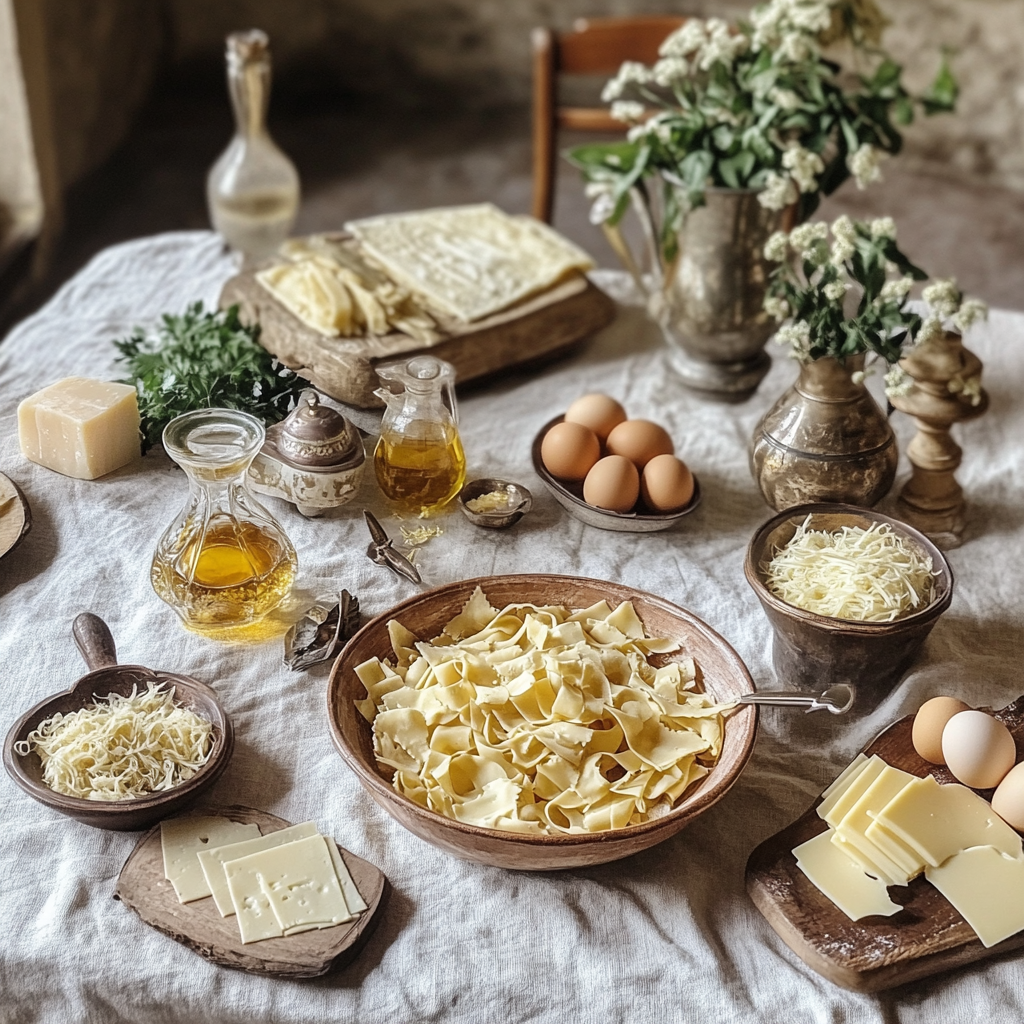
The Evolution of Pasta: A Historical Overview
Before we dive into the specific recipes, it’s worth understanding how pasta has evolved throughout history. Pasta’s long and storied past is intertwined with the history of the Mediterranean, and its spread across Europe was influenced by both geography and trade.
Ancient Times: The Early Beginnings of Pasta
The earliest forms of pasta can be traced back to the ancient civilizations of the Mediterranean, where grains like wheat and barley were abundant. Ancient Romans consumed a flat pasta known as Lagane, which resembled today’s lasagna sheets but was simpler and devoid of tomatoes and cheese, which weren’t introduced to European cuisine until much later. This form of pasta was typically served with olive oil, herbs, or legumes, making it a hearty and nutritious meal for Roman soldiers and peasants alike.
The Middle Ages: Pasta Takes Shape
By the Middle Ages, pasta had become more widespread across Europe, especially in Italy. During this time, dried pasta started to emerge as a practical food for long journeys, thanks to its long shelf life. Pasta dishes like lasagna gained popularity, especially in southern Italy, where wheat was abundant. Medieval lasagna, however, was quite different from today’s version, often incorporating ingredients like cheese and spices rather than tomatoes and meat, which were not yet common.
The Renaissance: Pasta as an Art Form
During the Renaissance, pasta became more refined, particularly in northern Italy. Wealthy families and noble households began to experiment with egg-based doughs and luxurious sauces made with butter and cheese. This era gave birth to elegant pasta dishes like tagliatelle, which was often served with rich sauces and herbs. Pasta was no longer just sustenance; it had become a symbol of culinary sophistication.
Key Ingredients and Substitutes in Historical Pasta Recipes
While modern pasta dishes incorporate a wide range of ingredients, historical pasta recipes were built around a few simple staples. These basic ingredients were available throughout the Mediterranean and could be easily adapted to different regions and time periods. Here’s a breakdown of the key ingredients in pasta recipes from history, along with some modern substitutes that cater to today’s dietary preferences and restrictions.
1. Flour
The cornerstone of all pasta, flour has been used to make pasta since its earliest days. The type of flour used often depended on the region. In ancient Rome and southern Italy, pasta was typically made with semolina flour, derived from durum wheat.
This hard wheat flour gives pasta its characteristic firm texture, which holds up well when boiled. In northern Italy, softer flours, such as all-purpose wheat flour, were more common, creating a more delicate pasta.
Substitute: For a healthier, more nutrient-rich option, you can use whole wheat flour. If you’re gluten-intolerant, you can substitute gluten-free flour blends, chickpea flour, or almond flour. While these alternatives will produce a slightly different texture, they still create delicious, satisfying pasta.
2. Water and Eggs
Early pasta was often made with just flour and water, especially in areas where eggs were scarce. However, by the Renaissance, the use of eggs in pasta dough became more common, especially in wealthier households. Egg pasta dough is richer and more tender than water-based dough, making it ideal for dishes like tagliatelle and fettuccine.
Substitute: For a vegan version of pasta, you can use a simple flour-and-water dough or substitute eggs with flaxseed meal or chia seeds mixed with water. These ingredients will help bind the dough and give it a similar texture to egg-based pasta.
3. Olive Oil
Olive oil has been a key ingredient in Mediterranean cooking for thousands of years. In early pasta recipes, olive oil was often used to coat the cooked pasta, adding flavor and preventing the noodles from sticking together. It was also a common ingredient in sauces and dressings, providing richness and depth to otherwise simple dishes.
Substitute: If you prefer a lighter alternative, you can use avocado oil or grapeseed oil, which offer a similar texture without the strong olive flavor. You can also infuse your olive oil with herbs or garlic for an extra burst of flavor.
4. Cheese
Cheese has been a beloved topping for pasta for centuries, particularly hard cheeses like Pecorino Romano and Parmigiano-Reggiano. These cheeses were grated over pasta dishes to add a salty, savory element that complemented the simple flavors of the pasta itself.
Substitute: For those avoiding dairy, nutritional yeast offers a cheesy flavor without the lactose. Alternatively, you can use vegan cheese made from cashews or almonds for a creamy, dairy-free option.
5. Herbs and Spices
Fresh herbs like sage, parsley, and mint were often used in ancient and medieval pasta recipes to enhance the flavor of the dish. Spices such as black pepper and even cinnamon were added to medieval pasta dishes, reflecting the influence of the spice trade during that time.
Substitute: If you’re looking for a modern twist, you can incorporate basil or oregano, both of which complement the classic pasta flavors. For an even bolder taste, try adding a pinch of red pepper flakes or smoked paprika.
If you’re interested in more classic recipes that incorporate fresh herbs and cheese, check out our Lunch Recipe category for a variety of delicious meals perfect for any time of day.
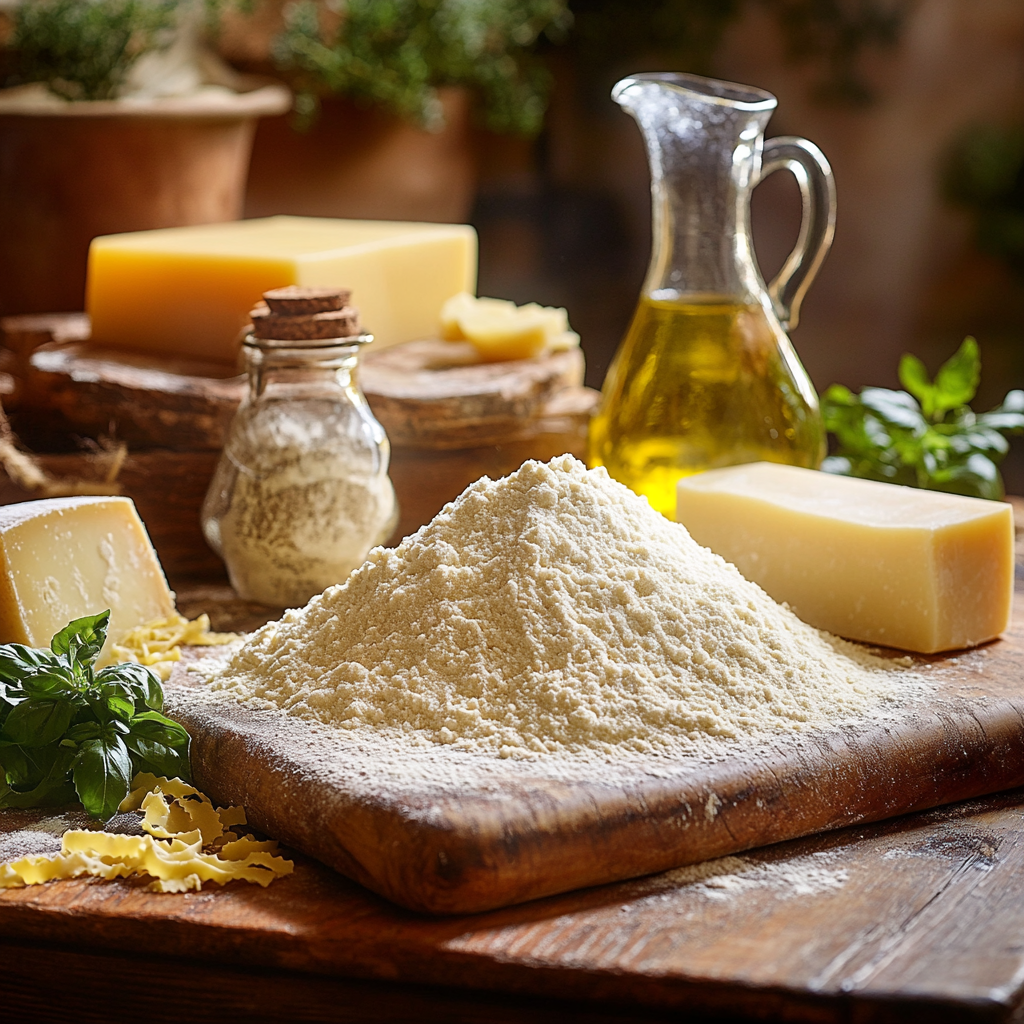
Step-by-Step Instructions for Historical Pasta Recipes
Now that we’ve covered the essential ingredients, it’s time to dive into the step-by-step instructions for making three iconic pasta recipes from history: Lagane from Ancient Rome, Lasagna from the Middle Ages, and Tagliatelle from the Renaissance. Each recipe reflects the culinary traditions of its time, using simple ingredients and methods to create dishes that are both timeless and delicious.
Recipe 1: Lagane from Ancient Rome
Lagane, one of the earliest forms of pasta, was a simple dish made from flour and water, cut into wide strips similar to modern-day lasagna. This dish was often served with legumes, olive oil, and herbs, providing nourishment for ancient Romans without the luxury of tomatoes or cheese.
Ingredients:
- 2 cups of semolina flour
- 1 cup of water
- 1 tablespoon of olive oil
- Salt to taste
- Fresh parsley or mint for garnish
Instructions:
- In a large mixing bowl, combine the semolina flour, water, and a pinch of salt. Knead the dough for 5-7 minutes until it becomes smooth and elastic.
- Roll out the dough on a lightly floured surface to form a thin, flat sheet. Aim for a thickness similar to lasagna noodles.
- Cut the dough into wide strips using a knife or pasta cutter.
- Bring a large pot of salted water to a boil, then cook the pasta strips for 3-4 minutes, until they float to the surface.
- Drain the pasta and drizzle it with olive oil. Garnish with fresh herbs like parsley or mint, and serve immediately.

Recipe 2: Lasagna from the Middle Ages
Medieval lasagna, unlike the modern version, was often made without tomatoes or meat. Instead, it featured layers of pasta sheets, cheese, and spices, creating a flavorful dish that was both simple and satisfying. Pecorino Romano and ricotta cheese were common ingredients in medieval Italian kitchens, adding richness and depth to this early version of lasagna.
Ingredients:
- 2 cups of flour (semolina or whole wheat)
- 2 eggs
- 1 cup of ricotta cheese
- ½ cup of grated Pecorino Romano
- Ground black pepper
- A pinch of cinnamon (optional, for medieval authenticity)
Instructions:
- To make the pasta dough, combine the flour and eggs in a large bowl. Knead the dough until smooth, then roll it out into thin sheets.
- Boil the pasta sheets for 2-3 minutes, then transfer them to a bowl of cold water to stop the cooking process.
- In a baking dish, layer the cooked pasta sheets with ricotta cheese, grated Pecorino Romano, black pepper, and a pinch of cinnamon.
- Continue layering until all the ingredients are used, then bake the lasagna in a preheated oven at 350°F for 20-25 minutes, until the top is golden brown.
- Let the lasagna cool for a few minutes before slicing and serving.
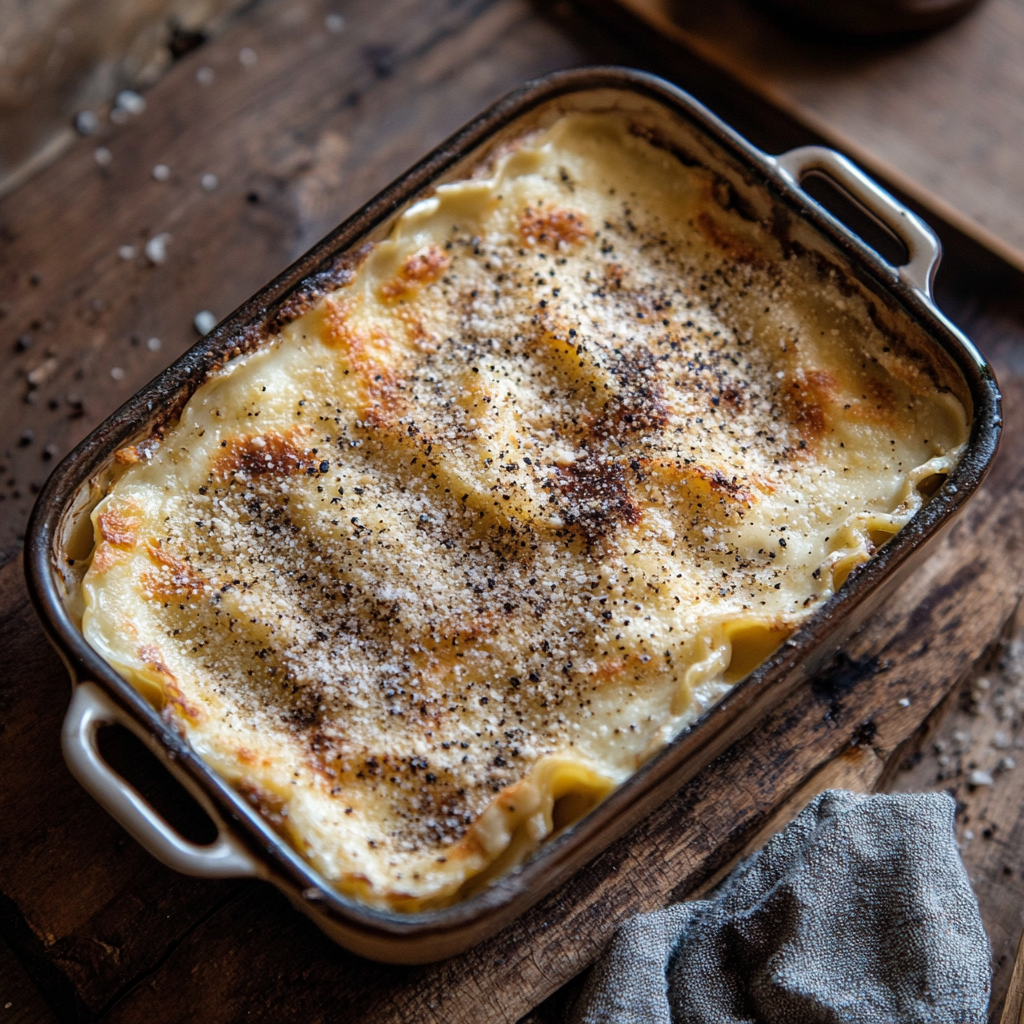
Recipe 3: Tagliatelle from the Renaissance
Tagliatelle, a pasta made with egg-based dough, became a popular dish during the Renaissance, especially in northern Italy. It was often served with simple sauces made from butter and herbs, like sage, which enhanced the flavor of the fresh pasta without overpowering it.
Ingredients:
- 2 cups of all-purpose flour
- 3 eggs
- 2 tablespoons of butter
- Fresh sage leaves
- Grated Parmigiano-Reggiano
Instructions:
- Make the pasta dough by mixing the flour and eggs in a large bowl. Knead the dough until smooth and elastic, then let it rest for 30 minutes.
- Roll out the dough into thin sheets and cut it into long, thin ribbons to form tagliatelle.
- Bring a large pot of salted water to a boil and cook the tagliatelle for 3-4 minutes, until al dente.
- In a large skillet, melt the butter over medium heat and add the fresh sage leaves. Cook the sage until crispy.
- Toss the cooked tagliatelle in the butter and sage, then serve with grated Parmigiano-Reggiano.
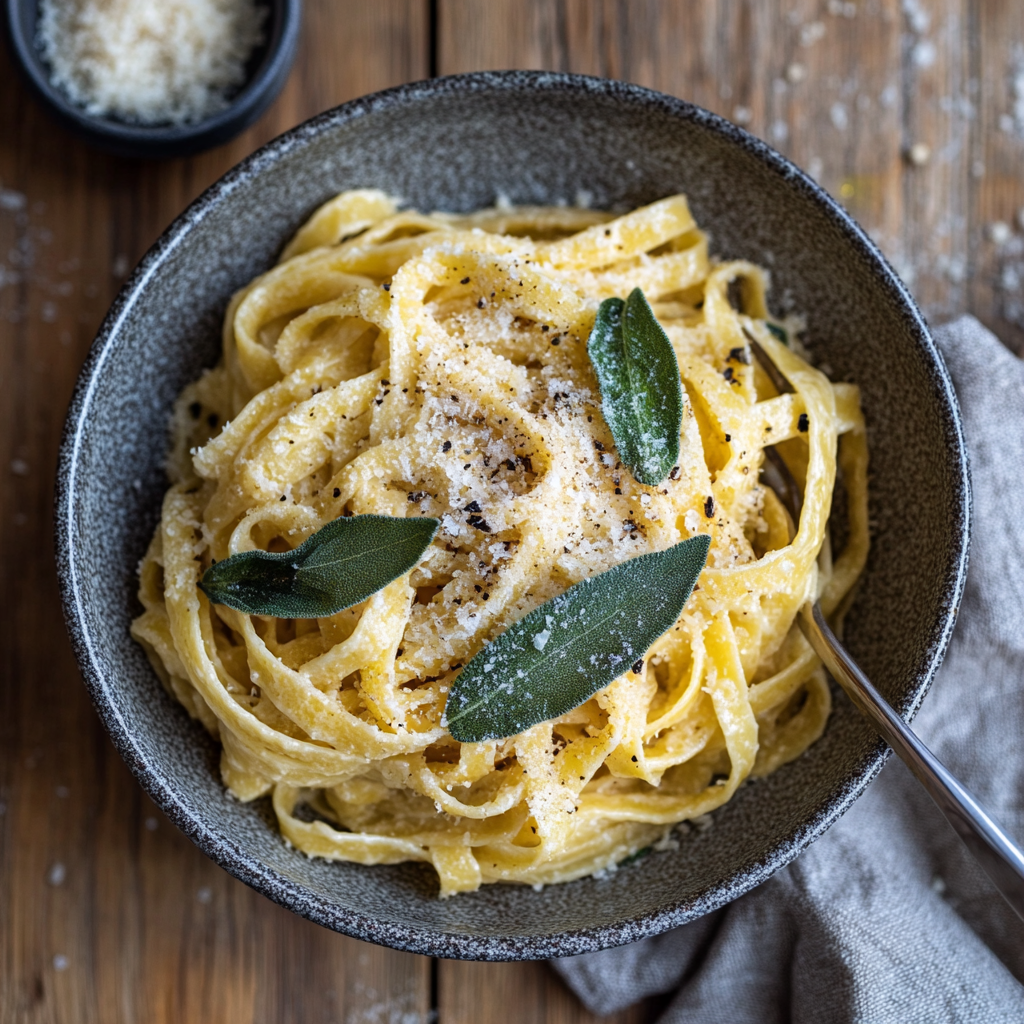
Flavor Variations and Additions
While historical pasta recipes were often simple and relied on available ingredients, that doesn’t mean you can’t get creative with modern variations. Below are a few ideas for adapting these classic dishes to suit different tastes, dietary preferences, and available ingredients.
1. Vegetarian and Vegan Options
Most historical pasta dishes are naturally vegetarian, as meat was often reserved for special occasions or more elaborate meals. To enhance these dishes, consider adding sautéed vegetables like spinach, mushrooms, or zucchini to your lasagna layers. If you’re looking for a vegan alternative, you can substitute the cheese with nutritional yeast or vegan ricotta, and use a flour-and-water dough in place of egg-based pasta.
2. Adding Meat
If you’d like to incorporate meat into these historical recipes, consider adding ground lamb, chicken, or beef. For the medieval lasagna, for example, you can layer the pasta with ground meat seasoned with herbs like rosemary or thyme. This will add richness and depth to the dish, making it heartier and more filling.
3. Gluten-Free Pasta
For those following a gluten-free diet, you can make these recipes using gluten-free flour blends or chickpea flour to create the pasta dough. While the texture will differ slightly from traditional wheat-based pasta, the flavors will remain just as delicious. You can also explore store-bought gluten-free pasta options, such as rice or corn-based noodles, if you’re short on time.
For more innovative and healthy pasta dishes, take a look at our Snacks Recipe category, where we share creative ways to enjoy your favorite ingredients in a lighter, more portable form.
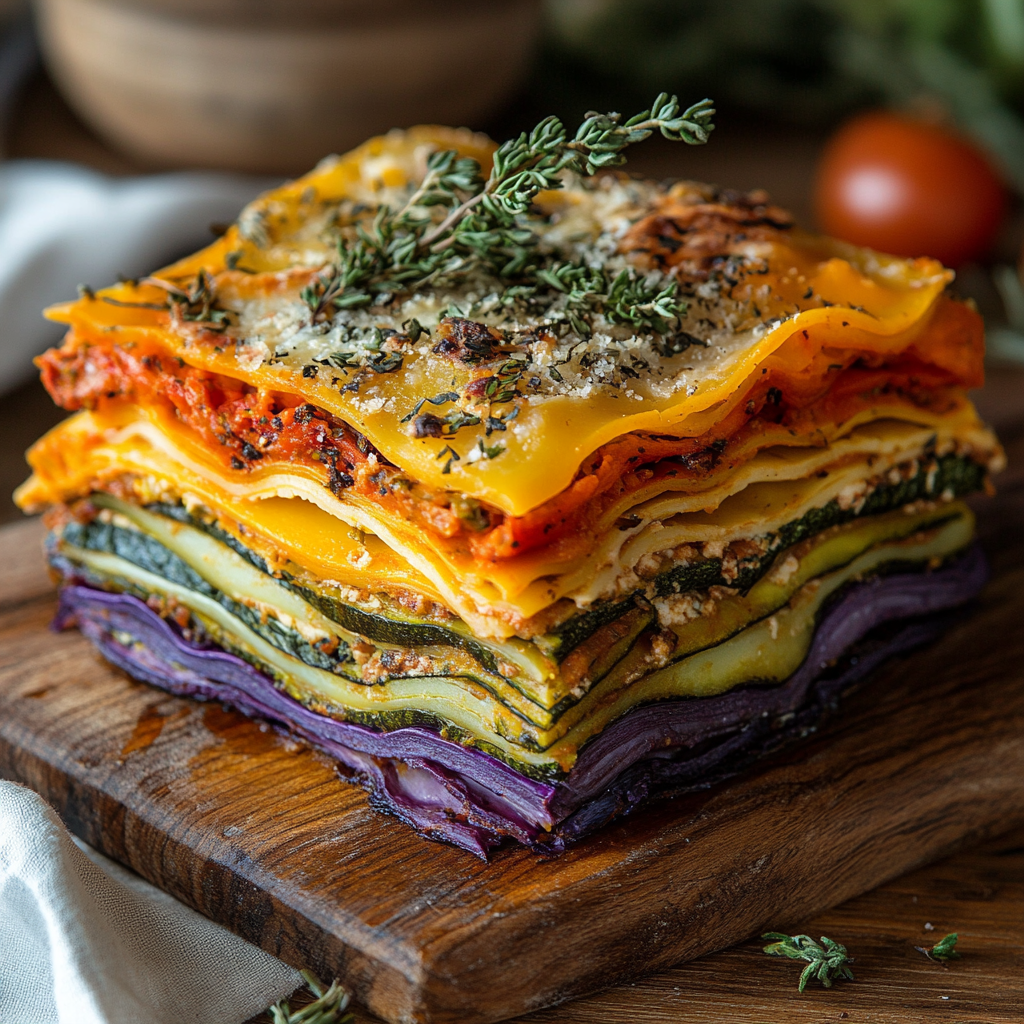
Health Benefits of the Ingredients
While pasta is often seen as a comfort food, it also has numerous health benefits, especially when made with wholesome, nutrient-rich ingredients. Here are some of the key health benefits of the ingredients used in these historical pasta recipes.
1. Semolina Flour
Semolina flour, derived from durum wheat, is high in protein and fiber, making it a more filling and nutritious option compared to refined white flours. It also contains important B vitamins like folate and thiamine, which are essential for energy production and maintaining healthy skin and nerves.
2. Olive Oil
Olive oil is one of the cornerstones of Mediterranean cuisine, and it’s rich in heart-healthy monounsaturated fats and powerful antioxidants. Consuming olive oil regularly can help lower cholesterol levels, reduce inflammation, and decrease the risk of heart disease. It’s also known for its anti-inflammatory properties, which can help improve overall health.
3. Eggs
Eggs are a fantastic source of high-quality protein, as well as essential nutrients like vitamin D, choline, and omega-3 fatty acids. When used in pasta dough, eggs provide structure and richness, while also adding valuable nutrients that support muscle repair and brain function.
4. Pecorino Romano and Parmigiano-Reggiano
Both Pecorino Romano and Parmigiano-Reggiano are excellent sources of calcium, which is crucial for maintaining strong bones and teeth. These cheeses also provide a good amount of protein, supporting muscle growth and repair. Additionally, they are rich in fatty acids that may help reduce inflammation and improve cardiovascular health.
For more information on the health benefits of Mediterranean ingredients like olive oil and whole grains, check out this comprehensive guide to the Mediterranean diet from a trusted health blog.
Frequently Asked Questions (FAQs)
1. Can I make these pasta dishes ahead of time?
Yes! All of the dough for these pasta recipes can be made ahead of time. Simply wrap the dough in plastic wrap and refrigerate for up to 24 hours before using. You can also make the pasta itself in advance, boil it, and store it in an airtight container in the refrigerator for up to two days. When you’re ready to serve, simply reheat the pasta in boiling water for a minute or two, or toss it in a hot sauce.
2. How should I store leftovers?
Leftover pasta dishes can be stored in the refrigerator in an airtight container for 2-3 days. To reheat, place the pasta in a pan with a splash of water or olive oil and gently warm it on the stovetop. For baked dishes like lasagna, you can reheat individual portions in the oven or microwave.
3. Can I freeze homemade pasta?
Yes, homemade pasta can be frozen either as dough or as cooked pasta. To freeze pasta dough, wrap it tightly in plastic wrap and store it in the freezer for up to three months. If you’ve already made the pasta, freeze the cooked noodles in a single layer on a baking sheet before transferring them to a freezer-safe container. When you’re ready to use them, boil the frozen pasta directly from the freezer, adding an extra minute or two to the cooking time.
For more tips on how to store and preserve pasta, visit our Breakfast Recipe category for meal ideas that can be prepped in advance and enjoyed throughout the week.
Conclusion
Exploring pasta recipes from history allows us to appreciate the simplicity, versatility, and cultural significance of this iconic food. From the rustic Lagane of Ancient Rome to the layered elegance of Medieval Lasagna and the refined luxury of Renaissance Tagliatelle, each recipe reflects the flavors, ingredients, and cooking techniques of its time. By recreating these dishes in your kitchen, you can take part in a culinary tradition that has been passed down through the ages.
Whether you’re a fan of ancient recipes or looking for new pasta ideas to try, these historical recipes offer something for everyone. They can be adapted to suit modern tastes and dietary preferences, allowing you to enjoy the rich flavors of the past in a way that works for your lifestyle today.
We hope you’ll try your hand at these timeless pasta dishes and experience the magic of cooking with simple, wholesome ingredients.
